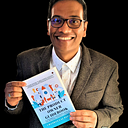Changing Our Perspective, 6 step process
“There are no facts, only interpretations.” – Friedrich Nietzsche
To everything in life, there’s invariably a positive and a negative side to
investigate.
Changing perspective is an active exercise if we choose to be compassionate, reasonable, and warm-hearted.
Let us consider our perspective as our attitude or mindset in life.
If we have a negative attitude, we contribute to having a negative perspective on life.
Whether our perspective is justified by previous events or not
is not the focus. The focus could be on what we are picking up and
choosing better features for forwards.
How do we change that perspective?
- Focus on our thoughts:
We have complete authority over what we choose to think about. Be
clear and consistent with thoughts of what we choose out of life — and
know what we don’t want. If we encounter, we are having negative
thoughts, flip them to positive ones. Everything will change. It needs
greater practice, but for sure something good will happen.
2. Focus on the Lesson, Not the Problem:
Life is a journey, and we require taking ownership of whatever happens
to us. No matter where we work, or what we’re doing, there are lessons
to be learned. And unless we can discover those lessons and embrace
our own journey, we will never actually reach the state of feeling
“successful” — in the sense that we are learning and growing and surely
becoming a stronger version of ourselves.
3. Being positive:
Positive attracts positive. Expressing ourselves is optimistic — in
other words, positive, complimentary, and generous — and we will
consistently develop higher levels of self-esteem and a healthier selfimage.
By getting into the habit of being positive, we can deal with
negative comments and setbacks much better.’ silver lining thinking’
will stimulate us to discover the good in events and to reframe problems
as challenges. If we can consciously interrupt negative thoughts that
might pop into our heads, then this will stimulate us to remain the
compassionate person we choose to be.
“What we see depends mainly on what we look for.”
– John Lubbock
4. Seeing the bigger picture:
Seeing the bigger picture means sometimes taking a step back and
finding time to build up the sort of perspective we will require for our
happiness and compassion. When we think big, we minimize thinking
of small trivial issues as we have bigger matters to deal with. We ignore
many micro-aspects as we can visualize the micro-issues. Visualizing
the big picture helps individuals to come out of one perspective into
another better one.
5. Positive self-talk:
A simple change in how we look at things and events can absolutely
transform our life. Perspective is all about what we choose to focus on.
If we choose to concentrate on negativity, chances are, our life will be
negative. On the contrary, if we choose to realize all the good things
part of our life. By extending to negatively
interpret events due to negative self-talk, we will continue to produce
undesired results.
6. Mindset:
Someone with a fixed mindset believes there are a lucky few who are
blessed with the right genes to become successful. Someone with a
growth mindset has a distinctive perspective on life. They consider
anybody who can grasp and strengthen the skills needed to accomplish
their goals. They see failure as a manifestation that their approach
was wrong, not as a signal that they were wrong. As a result, they
will continually try different things until they obtain their goal. They
change the way of thinking to bring new ways of working.
Changing our perspective is about acknowledging that negative
situations occur, but they do not necessarily lead to our failure. We can
gain from any condition, and we can invariably find something to be
grateful for.
When we discipline our minds to focus on the elements, we
can control and the elements moving right into our lives, we establish
an unconquerable will to establish our dream story.
All High-performance team members are disciplined in their mind
through coaching and self-retrospection with all the above-mentioned
steps.
